- No products in the cart.
Nurofen for Children Table n / 200mg of 8 pieces
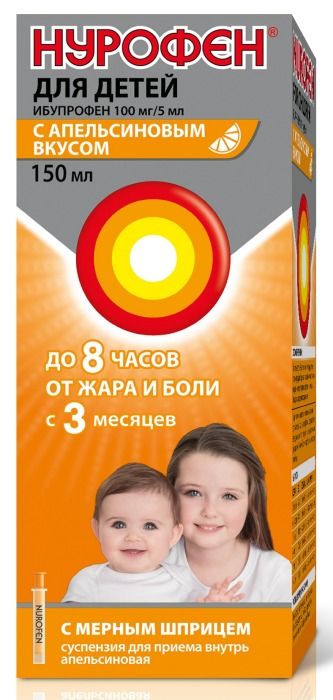
Nurofen for children oral suspension 100mg / 5ml 150ml vial with a syringe dosing orange
$4.17
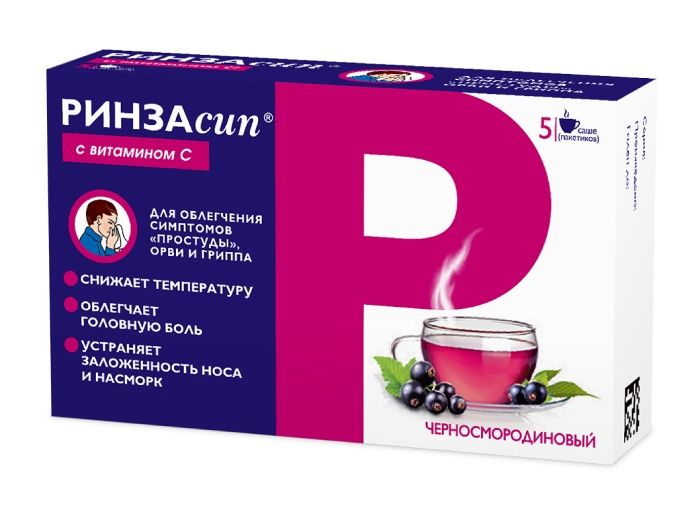
Rinzasip powder for r-ra 5g 5 pcs black currants / Vitamin C.
$3.86
$2.00
Nurofen for Children Table n / 200mg of 8 pieces
Description
Composition
Active substance:
Ibuprofen 200 mg
Excipients:
croscarmellose sodium, sodium lauryl sulfate, sodium citrate dihydrate, stearic acid, colloidal silicon dioxide. shell composition: carmellose sodium, talc, gum acacia, sucrose, titanium dioxide, Macrogol 6000, black ink [Opakod S-1-277001]
Description:
White or almost white tablets kapsulovidnoy forms a homogeneous structure with a polished surface coated with a film coating overprinted black “N” “on one side of the tablet.
Type tablet in cross section: a white or almost white mass.
Product form:
The package 8 tablets
Contraindications
– Hypersensitivity to any of the ingredients in the drug. Hypersensitivity to aspirin or other NSAIDs history including anamnestic data fit bronchial, rhinitis, urticaria, after receiving aspirin or other NSAIDs; complete or incomplete syndrome intolerance of acetylsalicylic acid (rhinosinusitis, urticaria, polyps, nasal mucosa, bronchial asthma).
– erosive and ulcerative diseases of the gastrointestinal tract in the acute stage (including gastric ulcer and duodenal ulcer, Crohn’s disease, ulcerative colitis).
– Hemophilia and other bleeding disorders (including hypocoagulation), hemorrhagic diathesis.
– The period after coronary artery bypass grafting.
– Gastrointestinal bleeding and intracranial hemorrhage.
– Severe hepatic insufficiency or active liver disease.
– Severe renal impairment (creatinine clearance
– Pregnancy III trimester.
– Children up to age 6 years.
– decompensated heart failure.
Carefully:
advanced age, heart failure, arterial hypertension, ischemic heart disease, cerebrovascular disease, dyslipidemia, diabetes, peripheral arterial disease, smoking, frequent alcohol use, liver cirrhosis with portal hypertension, liver and / or renal failure, nephrotic syndrome, hyperbilirubinemia, peptic gastric ulcer and duodenal ulcer (disorder), gastritis, enteritis, colitis, blood disease of unknown etiology (leukopenia and anemia), lactation, long e use of NSAIDs, severe somatic zabolevaeniya, simultaneous oral corticosteroids (prednisolone v.t.ch), anticoagulants (including warfarin), antiplatelet agents (including acetylsalicylic acid, clopidogrel), pregnancy I-II trimester selective serotonin reuptake inhibitors (including citalopram, fluoxetine, paroxetine, sertraline)
Dosage
200 mg
Indications
Headache, toothache, migraine, painful menstruation, neuralgia, back pain, muscle and rheumatic pains; febrile illness with flu and colds.
Interaction with other drugs
It should avoid the simultaneous use of ibuprofen with the following drugs:
Acetylsalicylic acid: with the exception of low-dose acetylsalicylic acid (not more than 75 mg per day), prescribed by the doctor, since the combined use may increase the risk of side effects. With simultaneous use of ibuprofen reduces inflammatory and antiplatelet effect of acetylsalicylic acid (may increase the incidence of acute coronary insufficiency in patients receiving as antiplatelet agents acetylsalicylic acid, low dose, after initiation of ibuprofen).
Other NSAIDs, in particular, selective COX-2 inhibitors: avoid simultaneous use of two or more agents from the group of NSAIDs due to possible increased risk of side effects.
Precautions used simultaneously with the following drugs:
Anticoagulants and thrombolytic drugs: NSAIDs may enhance the effect of anticoagulants, particularly warfarin and thrombolytic agents.
Antihypertensive agents (ACE inhibitors and angiotensin II) and diuretics NSAIDs may reduce efficacy of these groups. In some patients with impaired renal function (e.g., patients with dehydration or in elderly patients with impaired renal function) co-administration of ACE inhibitors or antagonists of angiotensin II and agents that inhibit cyclooxygenase, may lead to a deterioration of renal function, including the development of acute renal failure (usually reversible). These interactions should be considered in patients taking coxibs simultaneously with ACE inhibitors or angiotensin II. Therefore, the combined use of the above means should be used with caution, especially in the elderly. It is necessary to prevent dehydration in patients, and consider monitoring renal function after initiation of such combination therapy and periodically thereafter. Diuretics and ACE inhibitors may increase the nephrotoxicity of NSAIDs.
Steroids: increased risk of gastrointestinal ulcers and gastrointestinal bleeding.
Antiplatelet agents and selective serotonin reuptake inhibitors: increased risk of gastrointestinal bleeding.
Cardiac glycosides: co-administration of NSAIDs and cardiac glycosides can lead to aggravation of heart failure, decreased glomerular filtration rate and an increase in concentration of cardiac glycosides in blood plasma.
of lithium drugs: there is evidence of the likelihood of increasing the concentration of lithium in blood plasma during treatment with NSAIDs.
Methotrexate: there is evidence of the likelihood of increasing concentration of methotrexate in the blood plasma during treatment with NSAIDs.
Cyclosporin: increased risk of nephrotoxicity with concomitant administration of NSAIDs and cyclosporine.
Mifepristone: NSAIDs should be started no earlier than 8-12 days after mifepristone administration as NSAIDs can reduce the efficacy of mifepristone.
Tacrolimus: while the appointment of NSAIDs and tacrolimus may increase the risk of nephrotoxicity.
Zidovudine: simultaneous application of NSAIDs and zidovudine could result in increased gematotoksichnosti. There is evidence of increased risk of haemarthrosis and hematoma in HIV-positive patients with hemophilia who received co-treatment with zidovudine and ibuprofen.
Quinolone antibiotics series: patients receiving collaborative care NSAIDs and quinolone antibiotics series, may increase the risk of seizures.
Myelotoxic drugs: increased gematotoksichnosti.
Cefamandole, cefoperazone, cefotetan, valproic acid, plicamycin: an increase in the incidence hypoprothrombinemia.
Drugs that block tubular secretion: reducing clearance and increase plasma concentrations of ibuprofen.
Inductors microsomal oxidation (phenytoin, ethanol, barbiturates, rifampicin, phenylbutazone, tricyclic antidepressants): increased production of active hydroxylated metabolites increased risk of severe intoxication.
Inhibitors of microsomal oxidation: reducing the risk of hepatotoxicity.
Oral hypoglycemic drugs and insulin, sulfonylurea derivatives: potentiation of drugs.
Antacids and cholestyramine: reduced absorption.
Uricosuric drugs: reduction of drug efficacy.
Caffeine: increased analgesic effect.
Overdose
In children, the symptoms of overdose may occur after ingestion of a dose exceeding 400 mg / kg body weight. In adults, a dose-dependent effect of an overdose is less pronounced. The half-life of the drug overdose is 1.5-3 hours.
Symptoms include nausea, vomiting, epigastric pain, or more rarely, diarrhea, tinnitus, headache and gastrointestinal bleeding. In more severe cases, there are manifestations of the central nervous system: drowsiness, rarely agitation, convulsions, disorientation, coma. In cases of severe poisoning can develop metabolic acidosis and increased prothrombin time, kidney failure, liver damage tissue, blood pressure, respiratory depression and cyanosis. Patients with asthma may increase the disease.
Treatment: symptomatic, with obligatory airway, ECG monitoring and vital signs up to the normalization condition of the patient. We recommend the use of activated charcoal oral or gastric lavage for 1 hours after administration of potentially toxic doses of ibuprofen. If ibuprofen has already been absorbed, it can be assigned to alkaline water with the aim of removing the acid derivative of ibuprofen kidney diuresis. Frequent or prolonged convulsions should be to stop the intravenous administration of diazepam or lorazepam. When deterioration of asthma recommend the use of bronchodilators.
pharmachologic effect
Pharmacological group:
Nonsteroidal anti-inflammatory drug (NSAID).
Pharmacodynamics:
The mechanism of action of ibuprofen, the propionic acid derivative from the group of non-steroidal anti-inflammatory drugs (NSAIDs) is due to the inhibition of prostaglandin synthesis – mediators of pain, inflammation and hyperthermic response. Indiscriminately blocked cyclooxygenase 1 (COX-1) and cyclooxygenase 2 (COX-2), thereby inhibits the synthesis of prostaglandins. It provides quick directional effect against pain (analgesic), antipyretic and anti-inflammatory effect. Furthermore, ibuprofen reversibly inhibits platelet aggregation.
The analgesic effect of the drug is continued until 8 hours.
Pharmacokinetics:
High absorption, is rapidly and almost completely absorbed from the gastrointestinal tract (GIT). After ingestion fasting maximum concentration (Cmax) in plasma of ibuprofen is achieved after 45 minutes. The drug together with food can increase the time to peak concentration (TSmax) of 1-2 hours. Communication with the plasma proteins 90%. Slowly into the joint cavity, it is retained in the synovial fluid, making it larger concentration than in blood plasma. In the cerebrospinal fluid found lower concentrations of ibuprofen compared with blood plasma. After absorption of about 60% pharmacologically inactive R-form is transformed slowly into the active S-shape. It is metabolized in the liver. The half-life (T1 / 2)
2 hours. Excreted by the kidneys (in unmodified form are not more than 1%) and, to a lesser extent in the bile.
In limited studies, ibuprofen was detected in breast milk in very low concentrations.
Pregnancy and breast-feeding
Do not use this drug in the III trimester. It should avoid the use of the drug in the I-II trimester of pregnancy should consult a physician if necessary dose.
There is evidence that ibuprofen in small quantities can penetrate into breast milk without any adverse effects on the baby’s health, so it is usually in short-term need for the reception termination of breastfeeding does not arise. If necessary, long-term use of the drug should consult a doctor to decide on the termination of breastfeeding during treatment.
Conditions of supply of pharmacies
Without recipe
side effects
The risk of side effects can be minimized, if you take a short course of the drug in the lowest effective dose needed to control symptoms.
In the elderly there is an increased frequency of adverse reactions to treatment with NSAIDs, especially gastrointestinal bleeding and perforation, in some cases fatal.
Side effects are mainly dose dependent.
The following adverse reactions were observed at short ibuprofen in doses not to exceed 1200 mg / day (6 tablets).
In the treatment of chronic conditions and long-term use may cause other adverse reactions.
estimates of frequency of adverse reactions produced on the basis of the following criteria: very common (> 1/10), frequent (by> 1/100 to 1/1000 and 1/10 000
Blood disorders and lymphatic system
Very rare: disturbances of hematopoiesis (anemia, leukopenia, aplastic anemia, hemolytic anemia, thrombocytopenia, pancytopenia, agranulocytosis). The first symptoms of such disorders are fever, sore throat, superficial oral ulcers, flu-like symptoms, severe weakness, nosebleeds and bruising, bleeding, and bruising of unknown etiology.
Violations by the immune system
Infrequent: hypersensitivity reactions – nonspecific allergic reactions and anaphylactic reaction by the airway reactions (asthma, including its exacerbation, bronchoconstriction, dyspnea, dyspnea), skin reactions (pruritus, urticaria, purpura, angioedema, exfoliative and bullous dermatoses , including toxic epidermal necrolysis (Lyell’s syndrome), Stevens-Johnson syndrome, erythema multiforme), allergic rhinitis, eosinophilia.
Very rare: hypersensitivity severe reactions, including swelling of the face, tongue and throat, shortness of breath, tachycardia, hypotension (anaphylaxis, angioedema or severe anaphylactic shock).
Disorders of the gastrointestinal tract
Uncommon: abdominal pain, nausea, dyspepsia (including heartburn, bloating).
Rare: diarrhea, flatulence, constipation, vomiting.
Very rare: peptic ulcer, perforation or gastrointestinal bleeding, melena, bloody vomiting, in some cases fatal, especially in elderly patients, ulcerative stomatitis, gastritis.
Frequency unknown: exacerbation colitis and Crohn’s disease.
Disorders of the liver and biliary tract
Very rare: abnormal liver function, increased activity of “liver” transaminases, hepatitis and jaundice.
Violations of the kidneys and the urinary tract
Rare: acute renal failure (compensated and decompensated) especially in long-term use, in combination with increasing concentrations of urea in the blood plasma and the appearance of edema, proteinuria and hematuria, nephritic syndrome, nephrotic syndrome, papillary necrosis, interstitial nephritis, cystitis.
Disorders of the nervous system
Uncommon: headache.
Very rare: aseptic meningitis.
Violations of the cardiovascular system
Frequency is unknown: heart failure, peripheral edema, with prolonged use at increased risk of thrombotic complications (e.g., myocardial infarction), hypertension.
Violations of the respiratory system and organs of the mediastinum
Frequency not known: bronchial asthma, bronchospasm, dyspnea.
Laboratory parameters hematocrit or hemoglobin (may be reduced)
Bleeding time (may be increased)
concentration in plasma glucose (may decrease)
creatinine clearance (may decrease)
plasma creatinine concentration (may be increased)
Activity “liver” enzymes (may be increased)
When side effects should stop taking the drug and consult a doctor.
special instructions
It is recommended to take the drug the maximum possible short-course, and in the lowest effective dose needed to control symptoms. If necessary, the administration of the drug for more than 10 days, you must consult your doctor.
In patients with bronchial asthma or allergic disease in the acute phase as well as in patients with a history of asthma / allergy disorders preparation may provoke bronchospasm. Use of the drug in patients with systemic lupus erythematosus or mixed connective tissue disease associated with an increased risk of aseptic meningitis.
During long-term treatment is required to monitor patterns of peripheral blood and functional state of the liver and kidneys. When symptoms gastropathy shown careful control, comprising carrying esophagogastroduodenoscopy, total blood (hemoglobin), analysis of fecal occult blood. If necessary, the definition of 17-ketosteroids drug should be discontinued 48 hours prior to the study. During the period of treatment is not recommended intake of ethanol.
Patients with renal failure should consult a physician before using the product, since there is a risk of deterioration of renal function.
Patients with hypertension, including a history of and / or chronic heart failure, it is necessary to consult a physician before using the drug as the drug can cause fluid retention, hypertension and edema.
Patients with uncontrolled hypertension, congestive heart failure II-III class NYHA, ischemic heart disease, peripheral arterial disease and / or cerebrovascular disease assign ibuprofen should only after careful evaluation polzarisk ratios, while avoiding the use of high doses of ibuprofen (2400 mg / day).
The use of NSAIDs in patients with varicella may be associated with an increased risk of severe septic complications of infectious and inflammatory diseases of the skin and subcutaneous fat (for example, necrotizing fasciitis). In this regard, it is recommended to avoid use of the drug varicella.
Information for women planning a pregnancy: the drug inhibits the cyclooxygenase and prostaglandin synthesis, affects ovulation, disrupting women’s reproductive function (reversible after discontinuation of treatment).
Effects on ability to drive vehicles, machinery.
Patients marking dizziness, drowsiness, confusion or visual disturbances while taking ibuprofen, should avoid driving vehicles or machinery control.
Storage conditions
Store at a temperature not higher than 25 ° C.
Keep out of the reach of children.
Dosing and Administration
For ingestion. Patients with increased sensitivity of the stomach is recommended to take the drug at meal time.
Only for short-term use. Please read the instructions before taking the drug.
Adults and children over 12 years: inside 1 tablet (200 mg) 3-4 times a day. The tablets should be taken with water. To achieve a rapid therapeutic effect in the adult dose may be increased to two tablets (400 mg) 3 times a day.
Children from 6 to 12 years: 1 tablet (200 mg) 3-4 times a day; drug can be taken only when the baby up to 20 kg body weight.
The interval between the reception of the tablets must be at least 6 hours.
The maximum daily dose for adults is 1200 mg (6 tablets). The maximum daily dose for children 6 to 18 years: 800 mg (4 tablets).
If you are taking the drug for 2-3 days the symptoms persist or intensify, it is necessary to stop treatment and seek medical advice.
Information
Appearance may differ from that depicted in the picture. There are contraindications. You need to read the manual or consult with a specialist
Additional information
| Weight | 0.100 kg |
|---|---|
| Manufacturer | Nurofen |

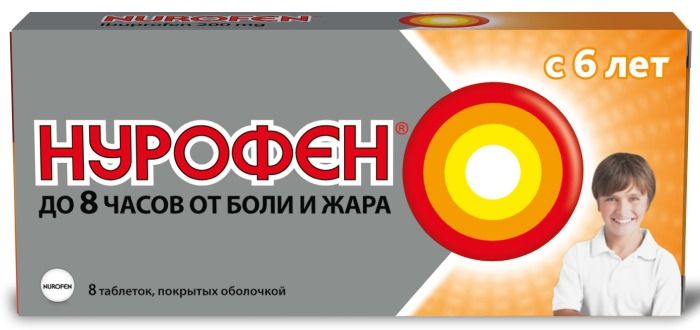

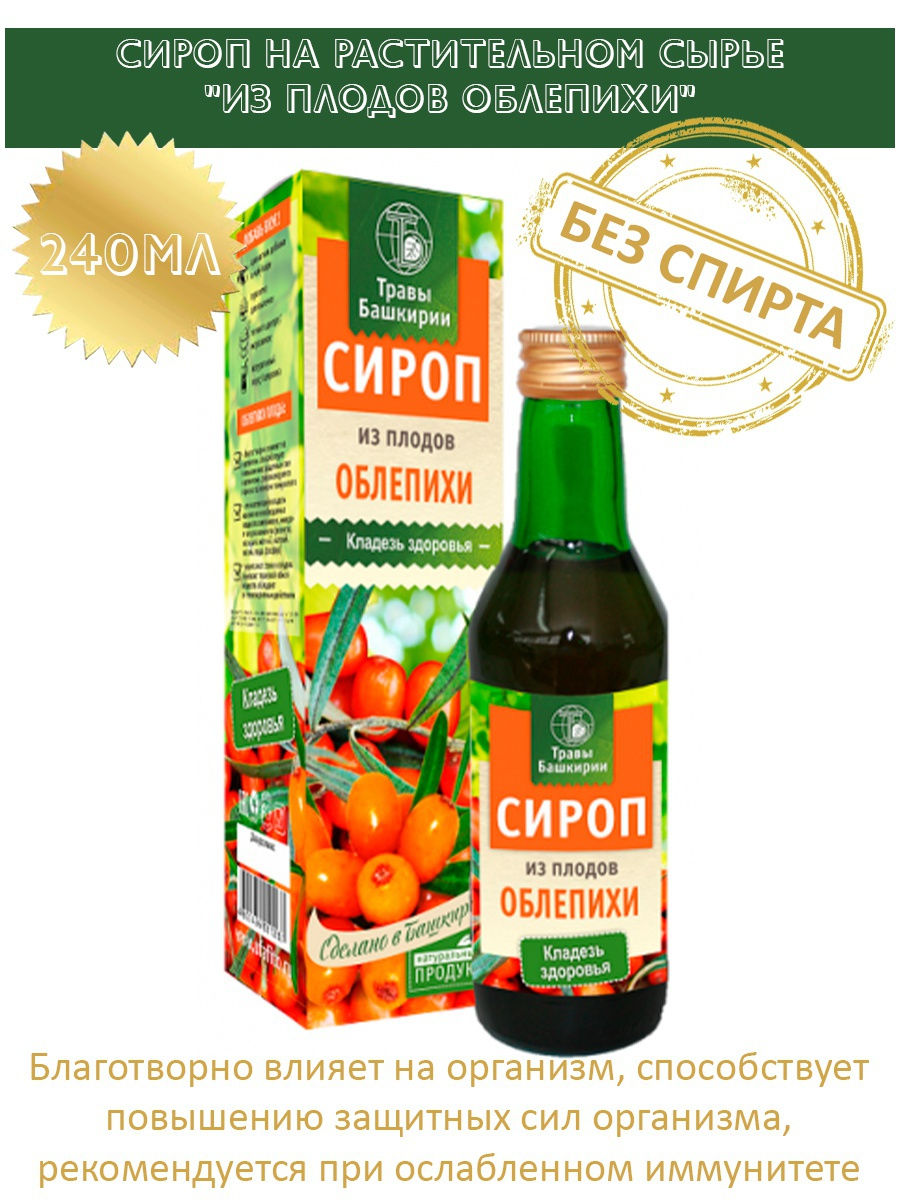
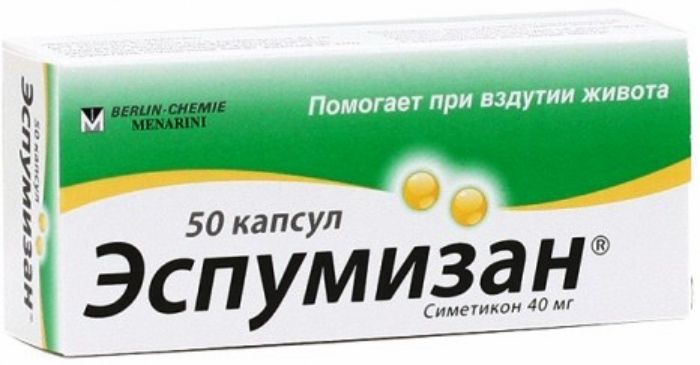

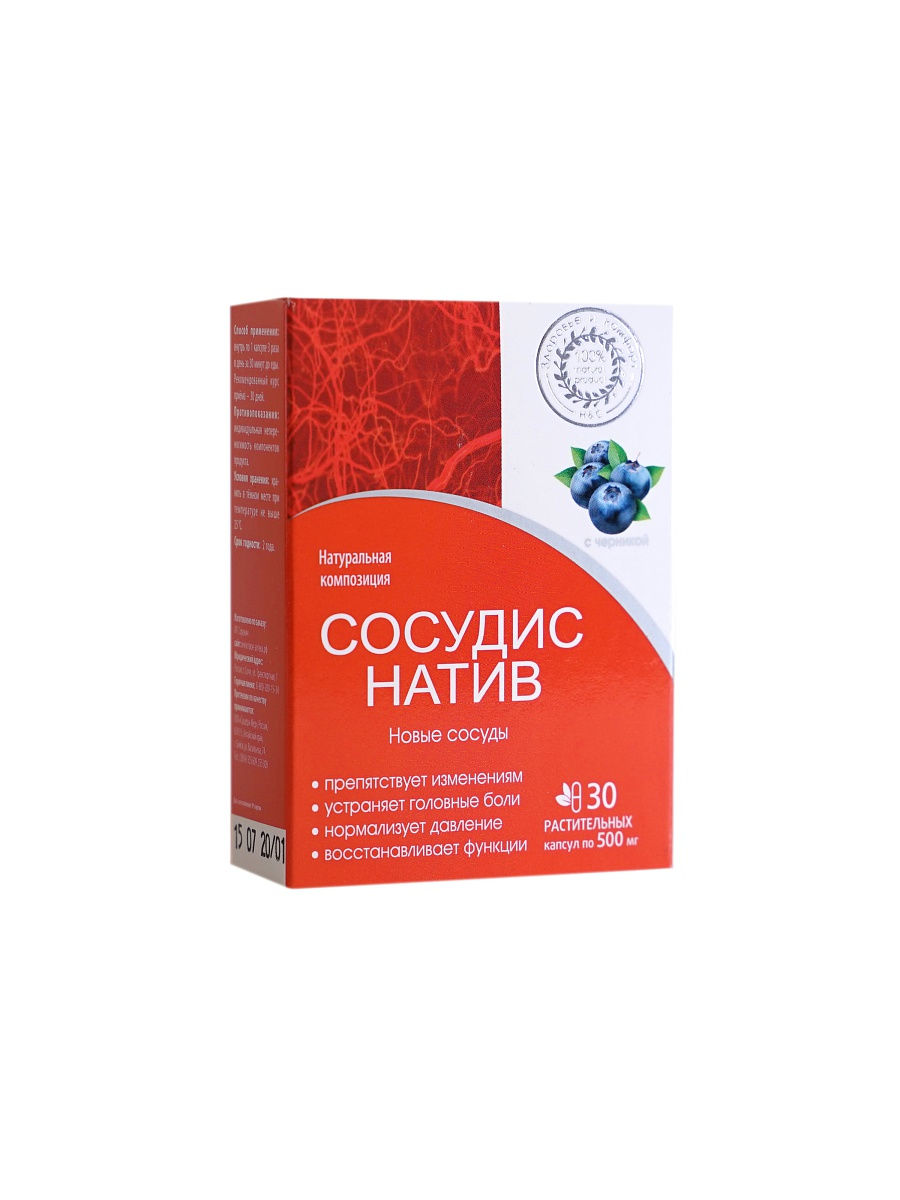
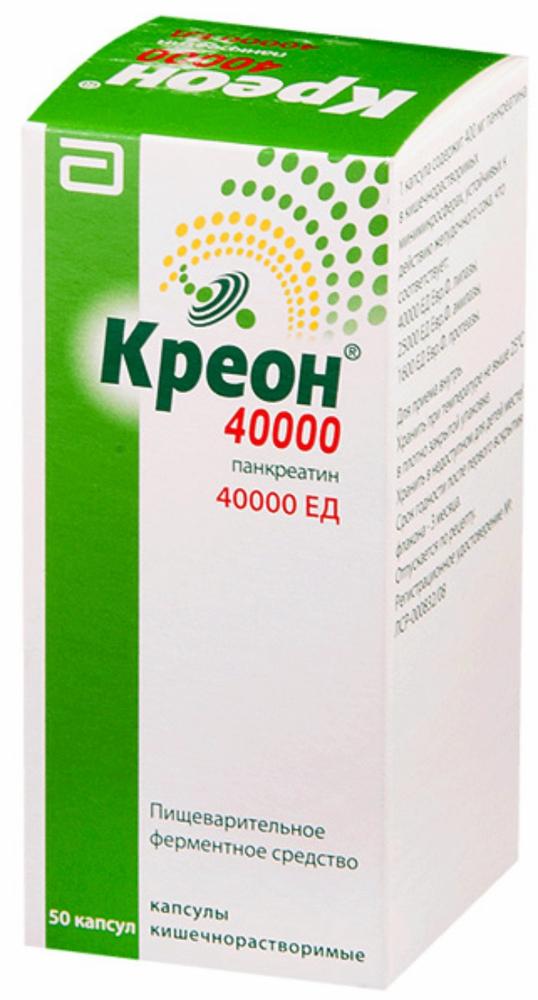




There are no reviews yet.